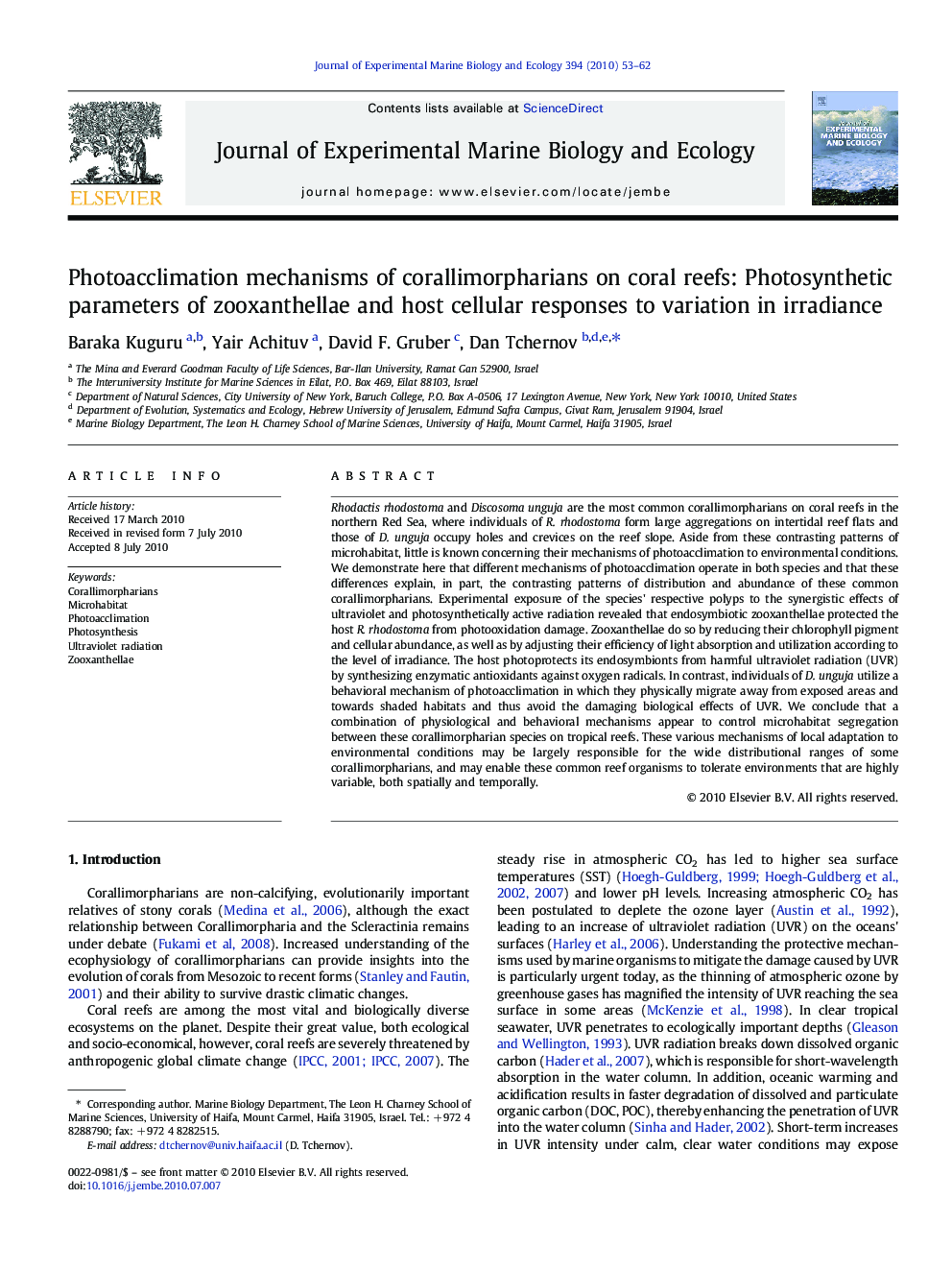| Article ID | Journal | Published Year | Pages | File Type |
|---|---|---|---|---|
| 4396408 | Journal of Experimental Marine Biology and Ecology | 2010 | 10 Pages |
Rhodactis rhodostoma and Discosoma unguja are the most common corallimorpharians on coral reefs in the northern Red Sea, where individuals of R. rhodostoma form large aggregations on intertidal reef flats and those of D. unguja occupy holes and crevices on the reef slope. Aside from these contrasting patterns of microhabitat, little is known concerning their mechanisms of photoacclimation to environmental conditions. We demonstrate here that different mechanisms of photoacclimation operate in both species and that these differences explain, in part, the contrasting patterns of distribution and abundance of these common corallimorpharians. Experimental exposure of the species' respective polyps to the synergistic effects of ultraviolet and photosynthetically active radiation revealed that endosymbiotic zooxanthellae protected the host R. rhodostoma from photooxidation damage. Zooxanthellae do so by reducing their chlorophyll pigment and cellular abundance, as well as by adjusting their efficiency of light absorption and utilization according to the level of irradiance. The host photoprotects its endosymbionts from harmful ultraviolet radiation (UVR) by synthesizing enzymatic antioxidants against oxygen radicals. In contrast, individuals of D. unguja utilize a behavioral mechanism of photoacclimation in which they physically migrate away from exposed areas and towards shaded habitats and thus avoid the damaging biological effects of UVR. We conclude that a combination of physiological and behavioral mechanisms appear to control microhabitat segregation between these corallimorpharian species on tropical reefs. These various mechanisms of local adaptation to environmental conditions may be largely responsible for the wide distributional ranges of some corallimorpharians, and may enable these common reef organisms to tolerate environments that are highly variable, both spatially and temporally.
